|
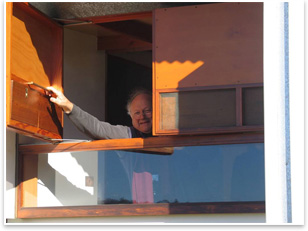 Glenn Marcus Murcutt, Hon. FAIA, Selected for 2009 AIA Gold Medal Glenn Marcus Murcutt, Hon. FAIA, Selected for 2009 AIA Gold Medal
by Tracy Ostroff
Contributing Editor
Summary: The AIA Board of Directors selected Glenn Marcus Murcutt, Hon. FAIA, to receive the 2009 AIA Gold Medal. The Board honored Murcutt for the depth of his work and the breadth of his influence, which echoes well beyond his native Australia.
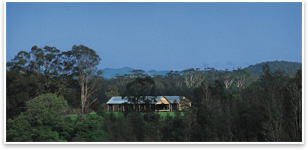 The AIA Board of Directors on December 4 selected Glenn Marcus Murcutt, Hon. FAIA, to receive the 2009 AIA Gold Medal for the depth of his work and the breadth of his influence, which echoes well beyond Australia, his place of practice. The sole practitioner is noted for his ecologically responsive and socially responsible Modernist suburban and rural homes. He takes inspiration from Mies van der Rohe’s strict geometries, Alvar Aalto’s naturalistic Modernist revisions, and the vernacular forms of his homeland and channels this design aesthetic into economical buildings that work in concert with and respond to the land, yet provide living environments that are expertly sheltered from the climate and topology of their sites. The AIA Board of Directors on December 4 selected Glenn Marcus Murcutt, Hon. FAIA, to receive the 2009 AIA Gold Medal for the depth of his work and the breadth of his influence, which echoes well beyond Australia, his place of practice. The sole practitioner is noted for his ecologically responsive and socially responsible Modernist suburban and rural homes. He takes inspiration from Mies van der Rohe’s strict geometries, Alvar Aalto’s naturalistic Modernist revisions, and the vernacular forms of his homeland and channels this design aesthetic into economical buildings that work in concert with and respond to the land, yet provide living environments that are expertly sheltered from the climate and topology of their sites.
“It’s 2 a.m. in Australia, and this is the most wonderful news!” Murcutt said, upon learning of the award in a call from AIA President Marshall Purnell, FAIA. “I’m most appreciative of this phone call. Tod must have done a good job,” referring to Tod Williams, FAIA, Tod Williams BillieTsien Architects, who presented Murcutt for the award to the AIA Board of Directors. “It’s just marvelous and I am absolutely astounded.”
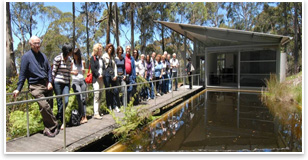 Touching the earth lightly Touching the earth lightly
Murcutt is regarded for his small scale residential projects, for which he uses a variety of natural materials: metal, wood, glass, stone, brick, and concrete, all presented in humanistically unpretentious and honest contexts. A Pritzker Prize jury noted that “his structures are said to float above the landscape, or in the words of the Aboriginal people of Western Australia whom he is fond of quoting, they ‘touch the earth lightly.’ Glenn Murcutt’s structures augment their significance at each stage of inquiry.”
“Recently our architectural field experienced an ‘ecological boom,’” writes 2005 AIA Gold Medalist Tadao Ando, Hon. AIA, in a letter of support for Murcutt’s nomination. “However, without relation to such a trend of time, Glenn Murcutt has always been focusing on the geographical and regional conditions, from the very beginning of his career.”
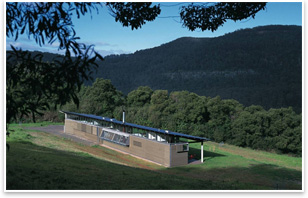 Solely Murcutt Solely Murcutt
In a time when architecture practice is all about collaboration and “corporate endeavor,” notes nominator Tom Howorth, FAIA, chair of the AIA Committee on Design’s Gold Medal Committee, few individuals “can claim sole and original authorship of a convincing body of significant architecture. Standing tallest among those few is Glenn Murcutt.”
Although Murcutt (who won the Alvar Aalto Medal in 1992 and the Pritzker Prize in 2002) works exclusively in Australia, he has had and continues to have a profound impact on architecture around the world. “While some might characterize a single-continent geographic range of work as ‘regional,’ the effect of Mr. Murcutt’s is amplified by impassioned and extensive lectures and a commitment to teaching throughout the world,” Howorth writes.
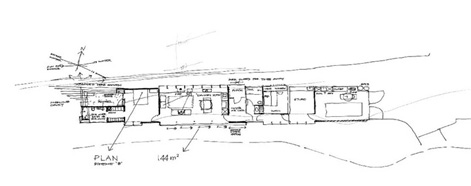
Toward an aesthetic of minimalism
Murcutt was born in London in 1936 and grew up in the remote Morobe district of New Guinea. This childhood living close to the land developed Murcutt’s preference for simple, vernacular architecture. His father introduced him to the architecture of Ludwig Mies van der Rohe and the philosophies of Henry David Thoreau. Murcutt studied architecture at the University of New South Wales from 1956 to 1961, during which he worked with a series of architects. He established his own practice in Sydney in 1970.
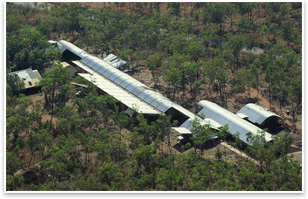 A three-month world tour in 1973 brought Murcutt to the work of California and Catalan “regionalists” Craig Ellwood and Jose Antonio Coderch and with Pierre Chareau’s Maison de Verre in Paris, giving clarity to the notion of “evolving an astylistic architecture in which tectonic invention was inseparable from poetic form,” notes a biography. Anne Whiston Spirn, an MIT professor in the departments of Architecture and Urban Studies and Planning agrees: “Murcutt’s starting point for design is an understanding of the processes that shape human lives and settlements. He responds to those processes and gives form to buildings in ways that make these processes tangible and memorable. The hallmarks of Murcutt’s work are an aesthetic of minimalism, an ethic of ecological responsibility, innovation in and attention to architectural detail, and an eloquent elegance of architectural expression.” A three-month world tour in 1973 brought Murcutt to the work of California and Catalan “regionalists” Craig Ellwood and Jose Antonio Coderch and with Pierre Chareau’s Maison de Verre in Paris, giving clarity to the notion of “evolving an astylistic architecture in which tectonic invention was inseparable from poetic form,” notes a biography. Anne Whiston Spirn, an MIT professor in the departments of Architecture and Urban Studies and Planning agrees: “Murcutt’s starting point for design is an understanding of the processes that shape human lives and settlements. He responds to those processes and gives form to buildings in ways that make these processes tangible and memorable. The hallmarks of Murcutt’s work are an aesthetic of minimalism, an ethic of ecological responsibility, innovation in and attention to architectural detail, and an eloquent elegance of architectural expression.”
Murcutt will be honored with the presentation of the 65th AIA Gold Medal at the 2009 Accent on Architecture Gala in February in Washington, D.C. |



 The AIA Board of Directors on December 4 selected Glenn Marcus Murcutt, Hon. FAIA, to receive the 2009 AIA Gold Medal for the depth of his work and the breadth of his influence, which echoes well beyond Australia, his place of practice. The sole practitioner is noted for his ecologically responsive and socially responsible Modernist suburban and rural homes. He takes inspiration from Mies van der Rohe’s strict geometries, Alvar Aalto’s naturalistic Modernist revisions, and the vernacular forms of his homeland and channels this design aesthetic into economical buildings that work in concert with and respond to the land, yet provide living environments that are expertly sheltered from the climate and topology of their sites.
The AIA Board of Directors on December 4 selected Glenn Marcus Murcutt, Hon. FAIA, to receive the 2009 AIA Gold Medal for the depth of his work and the breadth of his influence, which echoes well beyond Australia, his place of practice. The sole practitioner is noted for his ecologically responsive and socially responsible Modernist suburban and rural homes. He takes inspiration from Mies van der Rohe’s strict geometries, Alvar Aalto’s naturalistic Modernist revisions, and the vernacular forms of his homeland and channels this design aesthetic into economical buildings that work in concert with and respond to the land, yet provide living environments that are expertly sheltered from the climate and topology of their sites. Touching the earth lightly
Touching the earth lightly Solely Murcutt
Solely Murcutt
 A three-month world tour in 1973 brought Murcutt to the work of California and Catalan “regionalists” Craig Ellwood and Jose Antonio Coderch and with Pierre Chareau’s Maison de Verre in Paris, giving clarity to the notion of “evolving an astylistic architecture in which tectonic invention was inseparable from poetic form,” notes a biography. Anne Whiston Spirn, an MIT professor in the departments of Architecture and Urban Studies and Planning agrees: “Murcutt’s starting point for design is an understanding of the processes that shape human lives and settlements. He responds to those processes and gives form to buildings in ways that make these processes tangible and memorable. The hallmarks of Murcutt’s work are an aesthetic of minimalism, an ethic of ecological responsibility, innovation in and attention to architectural detail, and an eloquent elegance of architectural expression.”
A three-month world tour in 1973 brought Murcutt to the work of California and Catalan “regionalists” Craig Ellwood and Jose Antonio Coderch and with Pierre Chareau’s Maison de Verre in Paris, giving clarity to the notion of “evolving an astylistic architecture in which tectonic invention was inseparable from poetic form,” notes a biography. Anne Whiston Spirn, an MIT professor in the departments of Architecture and Urban Studies and Planning agrees: “Murcutt’s starting point for design is an understanding of the processes that shape human lives and settlements. He responds to those processes and gives form to buildings in ways that make these processes tangible and memorable. The hallmarks of Murcutt’s work are an aesthetic of minimalism, an ethic of ecological responsibility, innovation in and attention to architectural detail, and an eloquent elegance of architectural expression.”